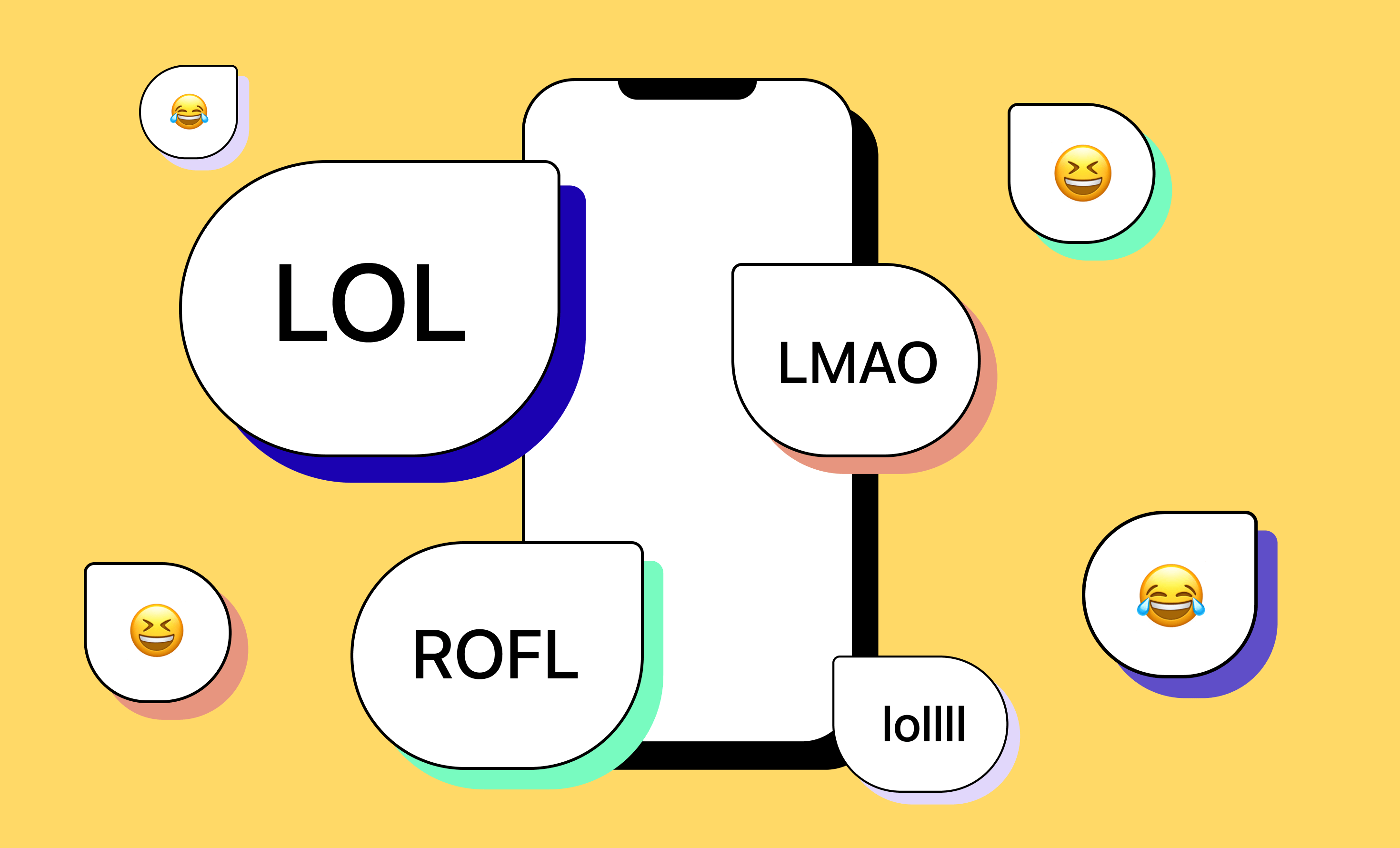Texting is one of the most popular forms of communication in the world. It’s a fast way to connect with others and has an open rate of 98%, ensuring your messages reach their target promptly – usually within 3 minutes.
The rise of texting has brought text abbreviations along with it as a way to quicken communication further. People who text send over 85 messages each day on average, so saving time with abbreviations (and knowing what they mean) lets you text even more effectively. One of these abbreviations is LOL, a term that most texters have seen or used themselves in a variety of different scenarios.
LOL originated as a term used to express joy in the 1980s on a platform called ViewLine. It showed that something was really funny, causing you to laugh out loud, but the meaning and usage of the term have changed over time.
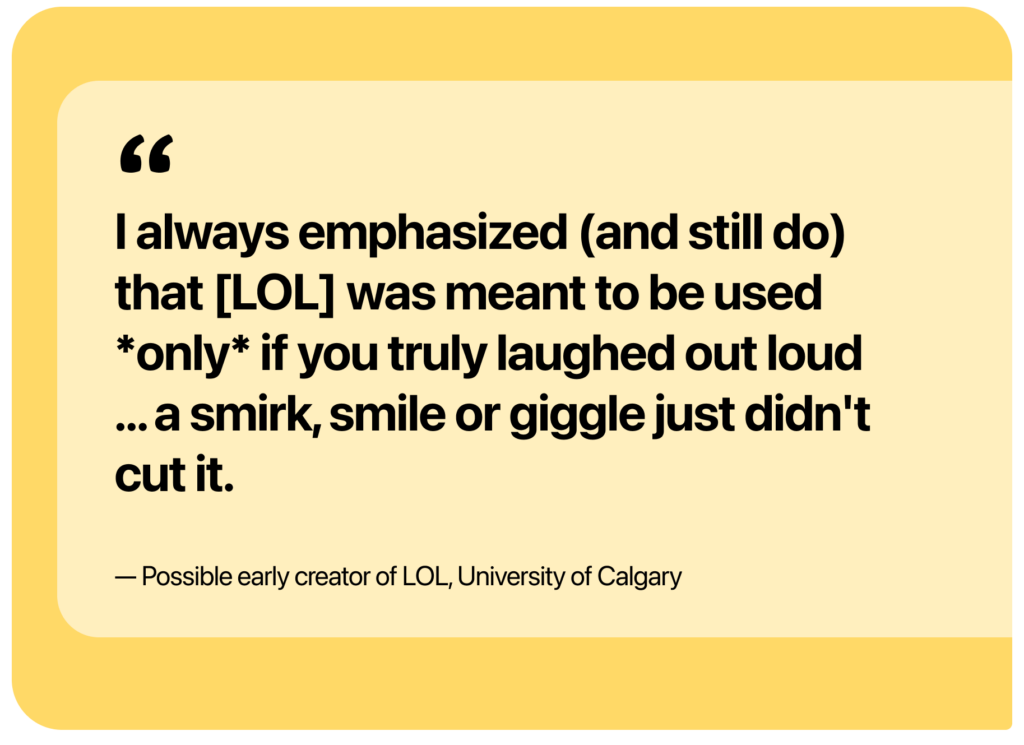
Now, LOL is a staple in every form of text-based communication, including social media as well as texting. While what the acronym stands for (“laughing out loud”) is widely understood, its meaning in a text can vary greatly depending on the situation.
LOL can be an interjection or verb, and you may see LOL as a response, standalone reaction, or tone indicator, depending on the context it’s used in. Understanding how it’s being used is important for seamless conversations.
If you find yourself asking, “what does lol mean in a text,” you’re in the right place.
What does LOL stand for?
The term LOL almost always stands for “laughing out loud” or “laugh out loud.” It’s an initialism pronounced “el oh el” or an acronym pronounced “lawl.” Officially, the Oxford English Dictionary recognizes LOL as a way to express amusement.
Previously, some users have adapted LOL to mean “lots of love” or “lots of luck.” However, this was more common amongst older generations and those who weren’t tech-savvy. If you use or see LOL used today, it’s best to assume that it means “laughing out loud” to avoid awkward situations.
What does LOL mean in a text?
LOL has multiple meanings that will depend on who is using it, where it’s being used in a message, and what it’s used in reply to.
Here are four of the primary ways to use LOL in a text:
Laughing at something funny
One of the most common ways people use LOL is in response to something funny or to indicate humor in your message. If the message you’re sending or responding to is funny enough, you might laugh out loud, or LOL. However, it’s also used when you don’t actually laugh out loud but still want to let the texter know you thought something was funny. Using uppercase LOL generally means a stronger reaction, while lowercase “lol” signals a milder response.
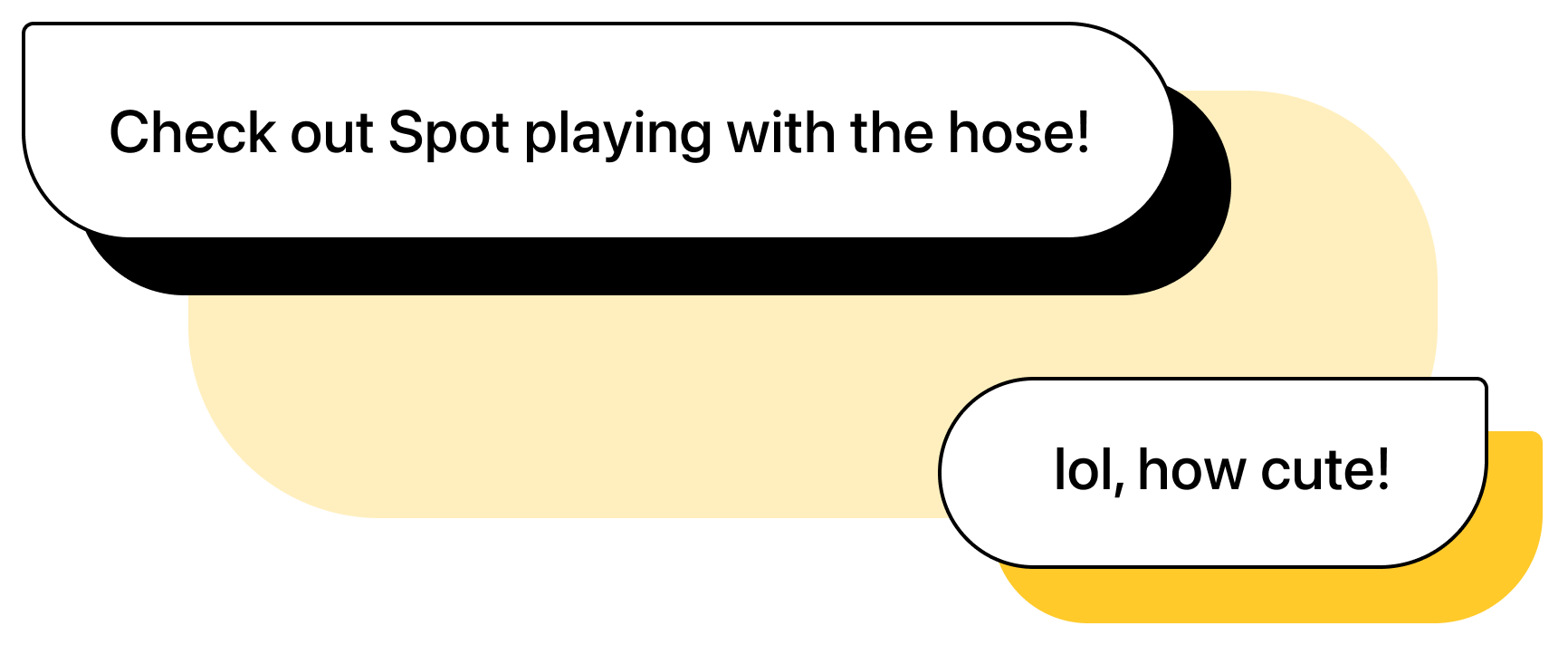

Indicating sarcasm
LOL can show that you’re being sarcastic in your messages when it precedes or follows the sarcastic phrase. It indicates that you’re laughing before or after your response and mean the opposite of what you said but in a casual and joking way.
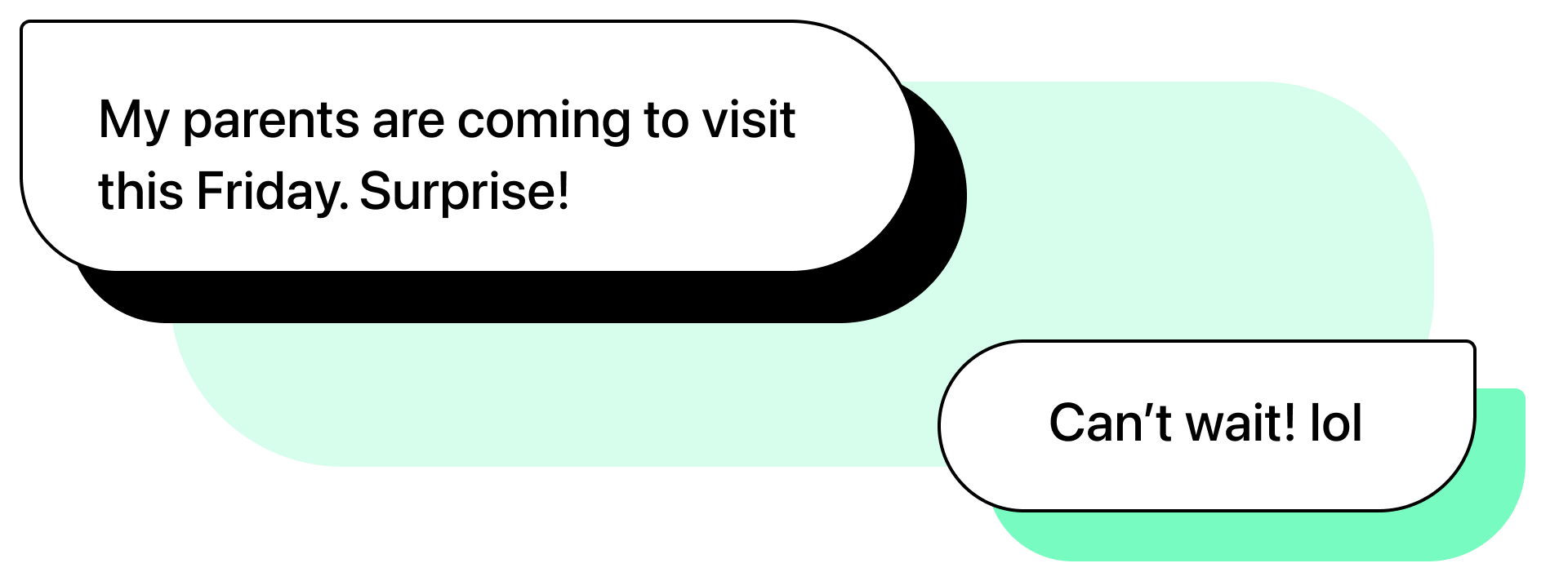
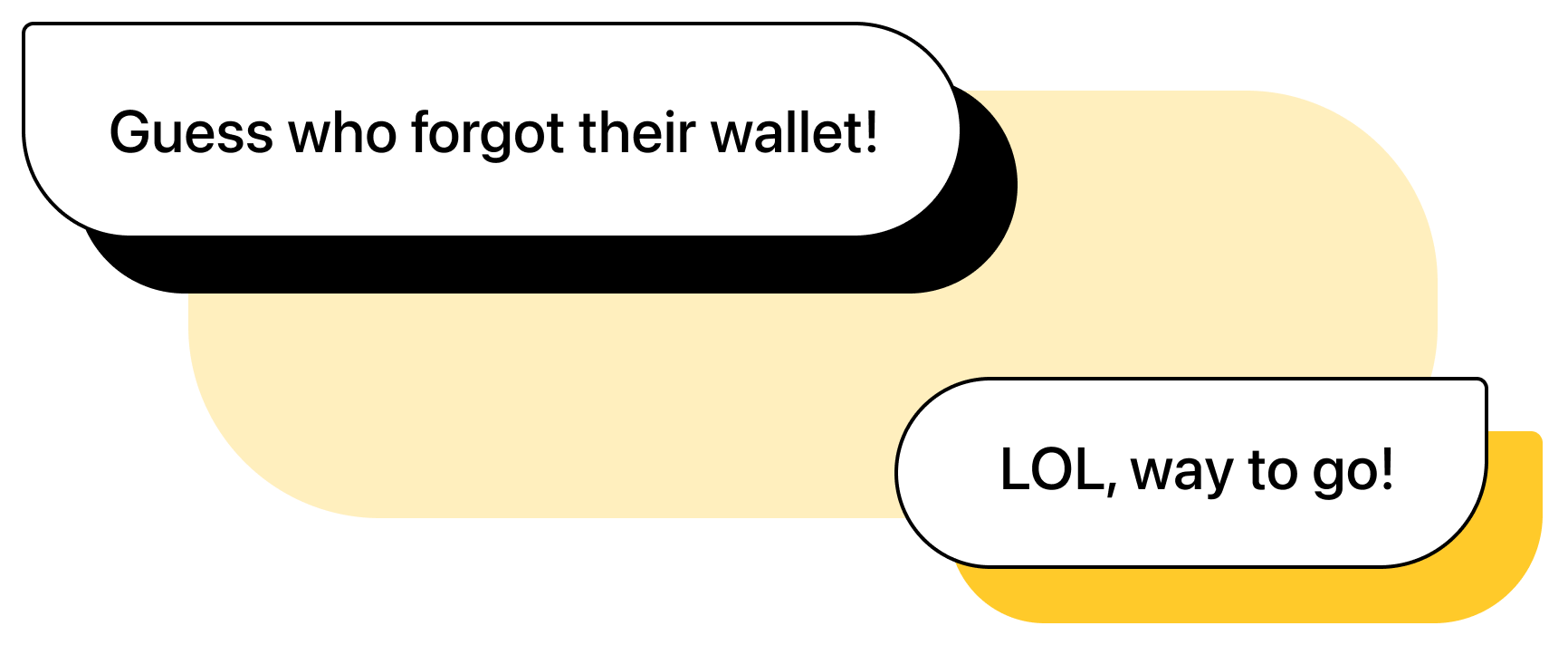
Showing lightheartedness or unseriousness
When not in response to something funny, LOL may indicate your tone to show that you’re being friendly or joking. Passive-aggressive comments that include LOL in them are not meant seriously and some texters use it alongside negativity to welcome feedback and commiseration.

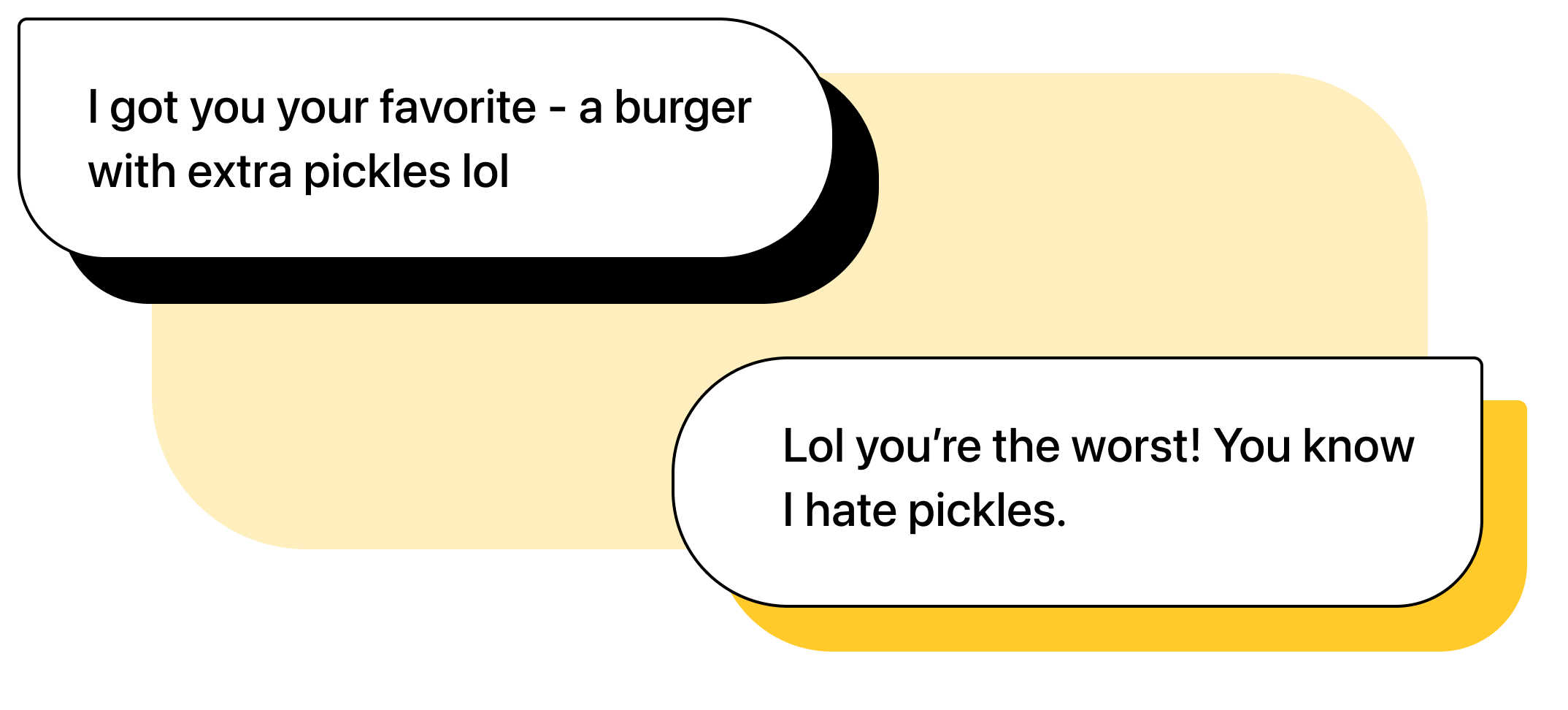
Demonstrating presence or acknowledgment
LOL may be an interjection in response to another message without an additional comment alongside it. When it stands alone, LOL generally often acknowledges a comment or shows that you’re present in the conversation.
For example, if someone is talking to you but you’re too busy to respond, sending “lol” back acknowledges that you received their message so you aren’t leaving them on read. In group chats, LOL on its own can be a way to join a conversation or make your presence known.
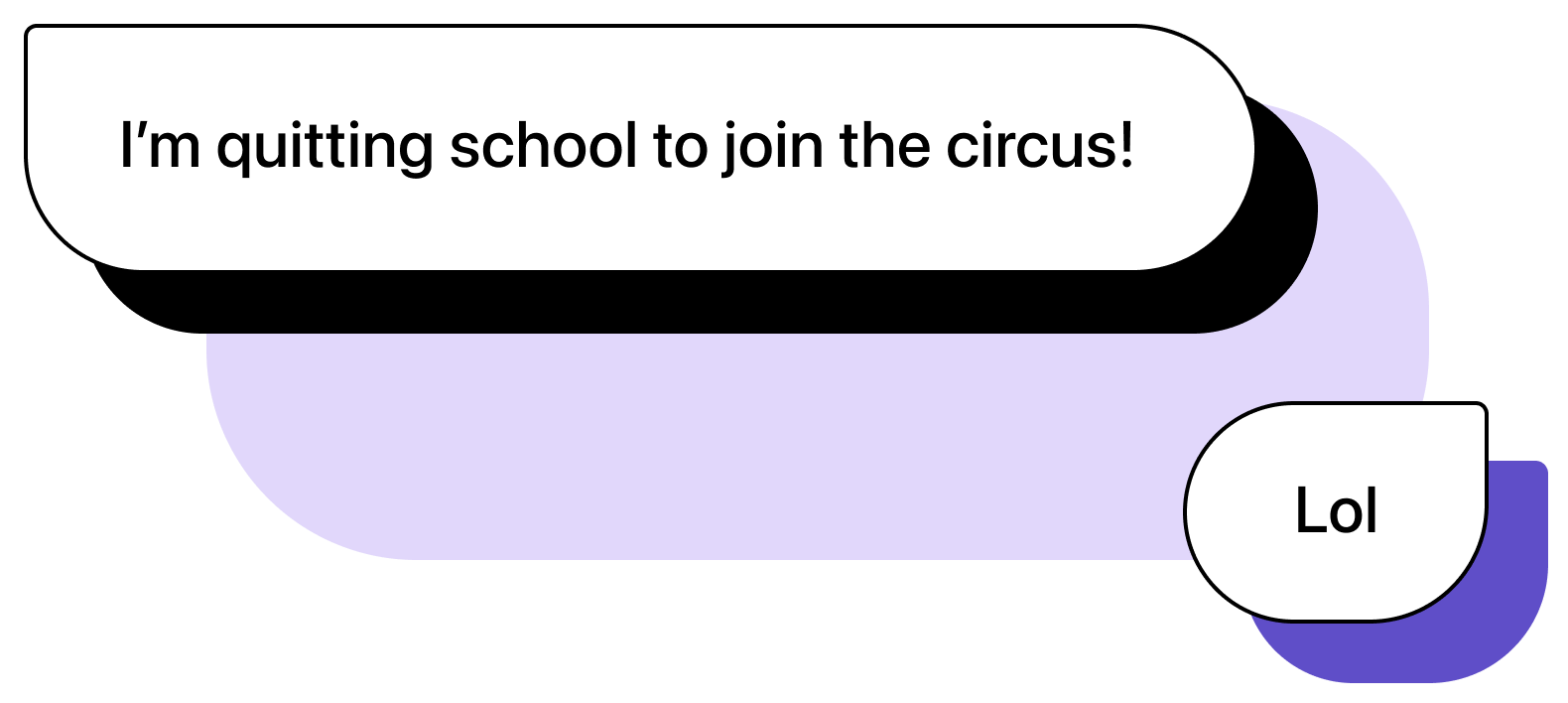
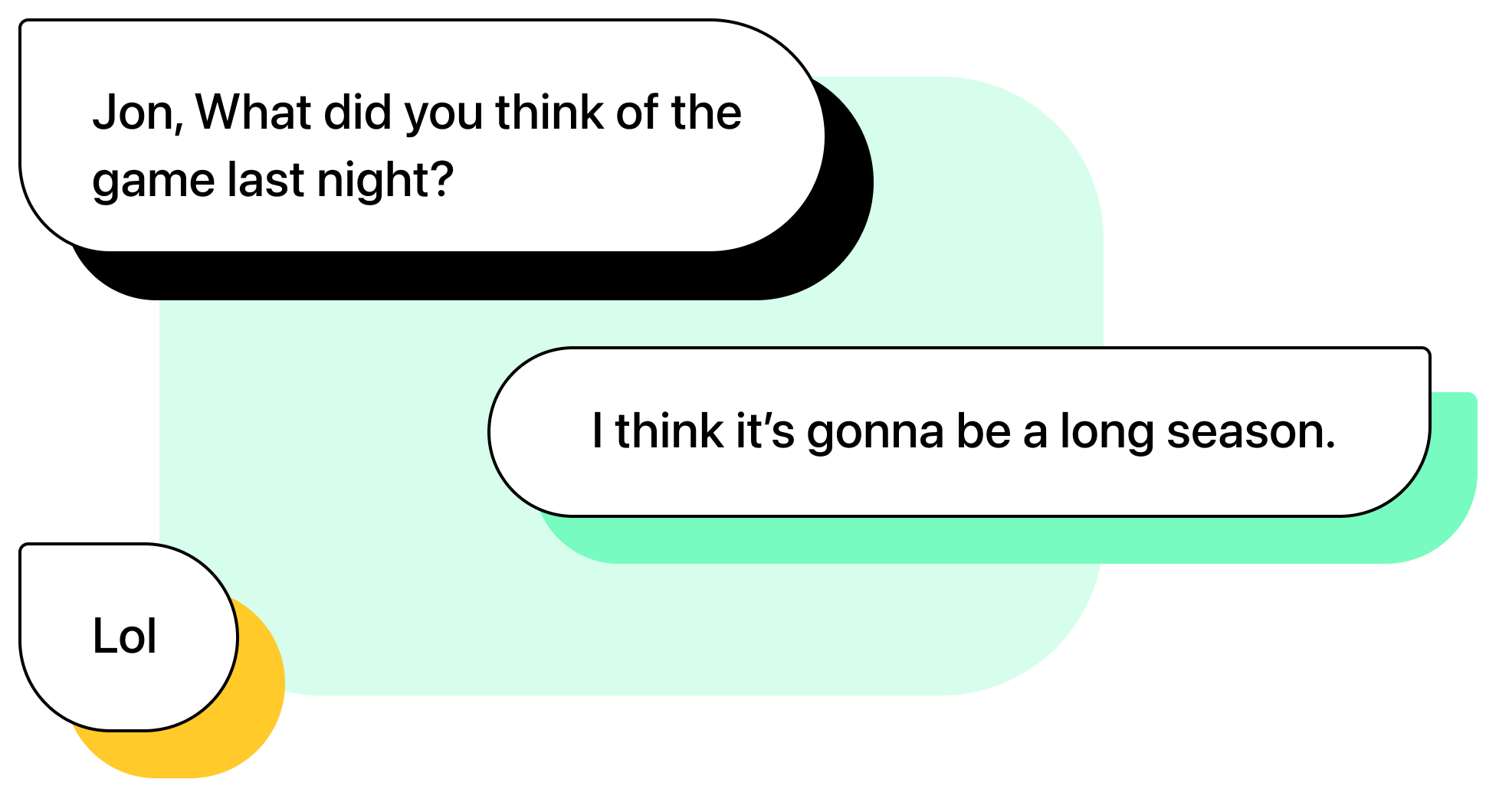
Variations of LOL
While LOL is one of the most important texting abbreviations, it’s not the only term used to show laughter or joy.
LMAO/LMFAO
LMAO, or “laughing my a** off,” is a common response to something that’s funny. It’s used similarly to LOL, where it can mean uproaring laughter (especially when you use the expletive LMFAO) or being sarcastic or self-deprecating. LMAO is also generally a stronger reaction than LOL because it represents more than just an outward laugh.
In many cases, LMAO is interchangeable with LOL in terms of meaning, but it’s less likely to be widely understood than its more popular variation.

ROFL
ROFL means “rolling on the floor laughing,” which is similar to both LOL and LMAO but is often reserved for the funniest of reactions because it’s the most drastic of physical reactions to humor. If you’re using ROFL, especially in all uppercase letters, it means that you’re laughing to yourself heartily.
ROFL can replace LOL or LMAO, or combine with LMAO to form ROFLMAO, one of the strongest humorous reactions you can have.
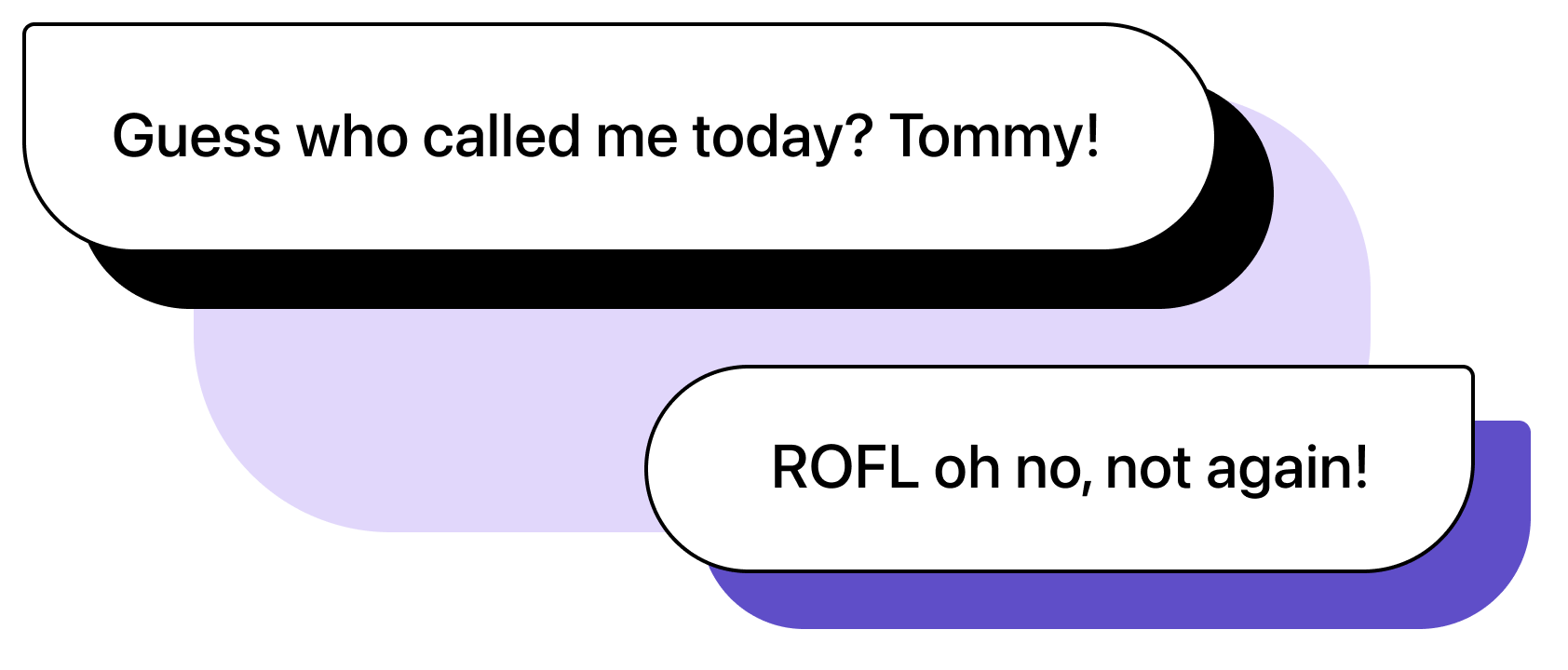
Alternate spellings
As a common texting abbreviation that’s been used for over 40 years, LOL comes in a wide variety of spellings and forms.
“Lololol”, “looool”, and “lolll” are variations of LOL that you may come across. These generally mean the same thing as the base form of LOL, but instead of a stronger reaction like LMAO or ROFL, they often signify mischief, “trolling,” or passive-aggressiveness.
Uppercase or lowercase
Capitalization goes a long way when it comes to how texting abbreviations readers interpret abbreviations. Many texters see full capitalization as yelling, but in the case of LOL and its variations, capitalization is a modifier to show how strong of a response you’re having and the intended tone of the message.
“LOL” is the form you would use when something is funnier than usual. The uppercase version is versatile and works in most applications for LOL, especially reactions to funny messages. “lol,” on the other hand, is generally a more reserved reaction or used to demonstrate a lack of seriousness or sarcasm.
In some cases, uppercase vs. lowercase LOL may have no meaning if the texter doesn’t use capitalization, so don’t rely on it alone to help you interpret the tone of the text.
When to use LOL in a text
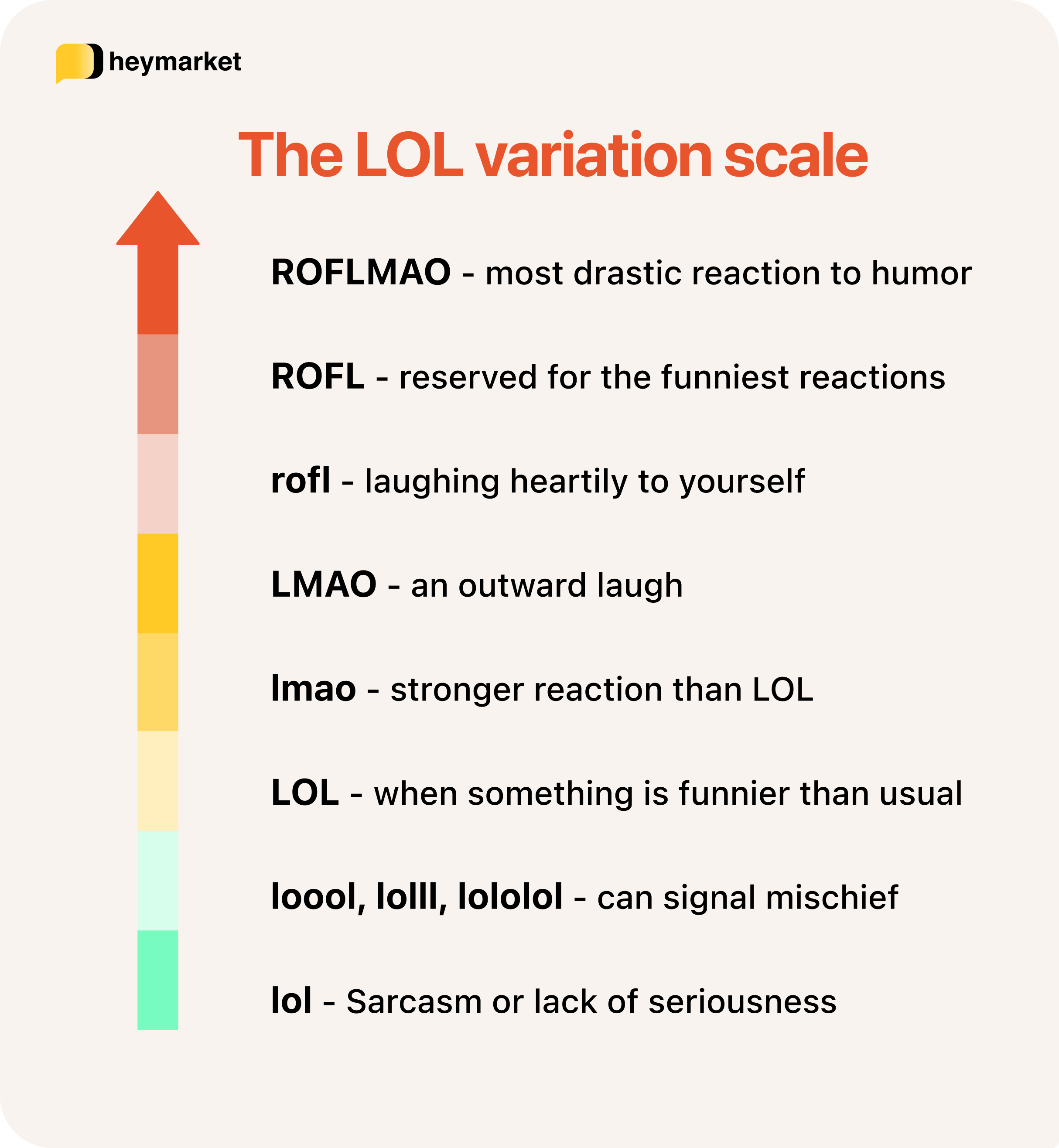
Now that you’ve seen every answer to “what does LOL mean in a text,” you’ll need to know how and when to use it appropriately yourself. While LOL is a very well known texting abbreviation, it doesn’t fit into every conversation, situation, or relationship.
You can safely use LOL in most personal relationships, including friends and family. Some older or less tech-savvy texters may have a hard time understanding what LOL means in your message, but most frequent texters will get it.
LOL is usable in certain professional applications due to how recognizable it is. Texting co-workers and employees who are your age, younger, or seasoned texters won’t cause many problems. However, some might see texting abbreviations as being unprofessional, so it’s best not to use LOL with your boss.
Businesses should also avoid using LOL and other texting abbreviations when mass texting. While most recipients will understand the meaning, it’s important that you avoid confusing anyone with your texts so that you can achieve the best response rate. Alternatively, customer service agents may use texting abbreviations like LOL when mirroring the customer’s usage to help build a stronger connection, but only if they use them first.
The lowdown on LOL and other texting abbreviations
Texting abbreviations play a significant role in online and mobile conversations. They’re widely used for saving time when sending messages and, in the case of LOL, to represent feelings or tone.
LOL is one of the most popular and most versatile terms you’ll come across when texting, so knowing how to answer “what does lol mean in a text” helps ensure that you won’t have any miscommunications.
Need more help with figuring out what texting abbreviations mean? Check out our guide for over 147 texting abbreviations, with examples, to help you communicate with friends, family, and coworkers.




